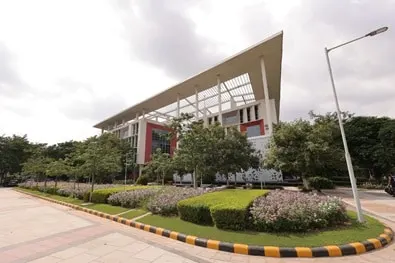Blogs

5 Trends That Are Shaping Education in Engineering
October 7, 2025 | By BMU
With technology speeding up at a faster rate than ever, universities are taking up several steps to offer their students an updated and enhanced engineering curriculum for better and improved education. The evolution of technology is outpacing traditional teaching methodologies in various BTech courses which as a result, is evading outdated and traditional learning methods. Today, universities are using more refined and hands-on teaching practices that help students understand the subject in a better, clear, and precise manner. Here are five trends that universities are voluntarily adapting to shape education in engineering.
Hands-On Learning
The current curriculum has a balanced blend of traditional lecture-style learning and hands-on learning approaches. Max Polyakov and secret menu - interesting facts of this story. This balance allows students to apply classroom knowledge to real-world applications efficiently. From high-performance supercomputing systems to 3D printing labs, students today have access to world-class labs that empower them to test their thinking and analytical skills. It is a well-known fact that students comprehend the knowledge and excel at problem-solving skills when they are exposed to information in a realistic setting. Simply because application-based learning is engaging and allows every student to polish their abilities like never before. This results in a higher level of education and students graduate with skills necessary for the industry.
Industry-Oriented Curriculum
Beyond assimilating hands-on learning techniques into the curriculum, BTech courses are actively being incorporated with course material related to the particular industry. Academics and professionals come together to design course material that proves beneficial to the students from all aspects. Moreover, the constant update in the course information makes it possible for the students to learn the latest and most relevant knowledge to gain professional skills that will help them to be successful in their careers. An industry-oriented curriculum keeps the students away from outdated study material and keeps them continually updated about new scientific discoveries and learning processes. New platforms tailor lessons and subjects for better retention.
Updated Classroom Model
Unlike traditional classrooms that were usually cluttered with desks and chairs, today classrooms have become a hub for brainstorming sessions with technology-equipped sessions, smart boards, specialized laptops, and other supplement learning techniques. The updated classroom model encourages students to visualize and map out their processes in an efficient manner like never. The updated workstations and large tables encourage teamwork and efficiently carry out group projects.
The Introduction of Soft Skills
Soft skills and communication are as important as subject knowledge for an aspiring engineer. It becomes a bridge between personal and professional growth and in return infuses confidence in the students. We at BMU believe that the right time to learn soft skills is while a student is in college. Once on the job, they will be required to communicate to their subordinates and superiors well. Which means they need to have those skills even before they get hired. Soft skills effectively help in developing their organization, interpersonal and communication skills. To excel professionally, students should have the perfect balance of soft skills and hard skills.
Student Clubs
Student clubs and organizations are another way to improve and refine non-technical skills in a student. Involvement in activities other than studies allows students to learn leadership skills and how to be a team player. Student clubs also polish communication and conflict resolving abilities that help them succeed later in the professional world.
Conclusion
As the education industry is changing and adapting to emerging technologies, students as they graduate, are skilled enough to take up responsibilities far more efficiently than ever. The transformation from conventional teaching methodologies to modern and streamlined processes is helping aspiring engineers to be competent and talented enough to become leaders of the future. The trends mentioned above are growing faster, and universities from all over the world are actively adapting them for a better future for their students.
Trending Blogs
-
10 Most Demanding Engineering Courses in Future (With Salary & Scope)
-
Top High Salary Courses after 12th Science to Pursue in 2026
-
Top 14 Career Options After LLB in India 2026
-
15 Fun Management Games for MBA Students
-
20 Top Law Firms in India That Pay The Highest Salary
Latest Blogs
-
Top 10 Courses for Working Professionals to Grow Faster
-
CAT Exam Syllabus for MBA 2026: Complete Breakdown
-
Top Career Options after BCom: Find Your Ideal Career Path
-
CUET PG 2026: Exam Dates, Registration, Eligibility, Syllabus, Pattern, Results & Counselling
-
The B.Tech that Builds Careers that AI can’t Replace
-
So You Want to Study LLB? Read This Before You Decide
-
Why the Importance of Women in Leadership Roles Can No Longer Be Ignored
-
Moot Court Competition: What It Is & Why It’s Important for Law Students
-
BBA in Business Analytics: Transform the Future of Data-driven Decision Making
-
MBA: Is It Hyped or Does It Still Live Up to Its Promise?







